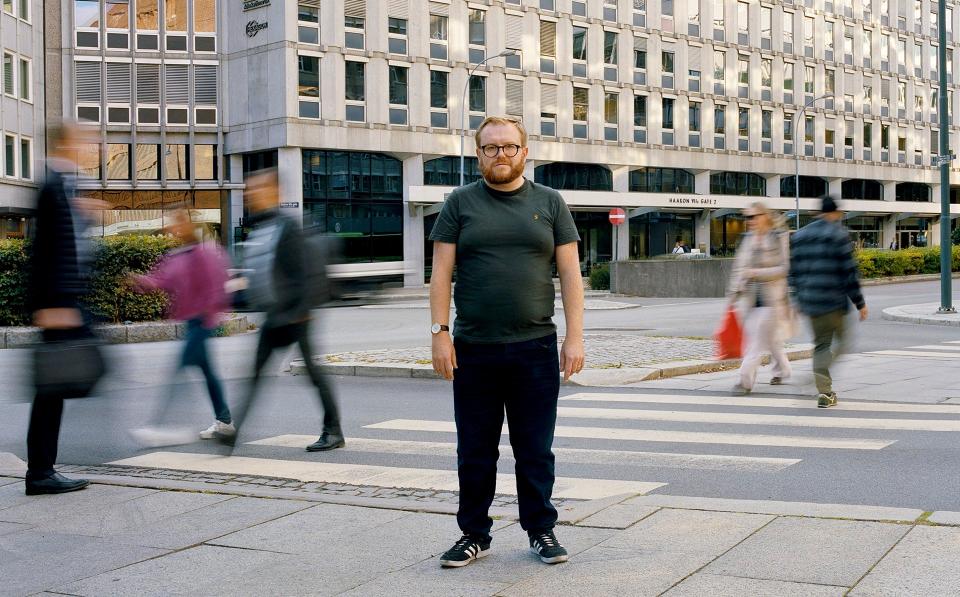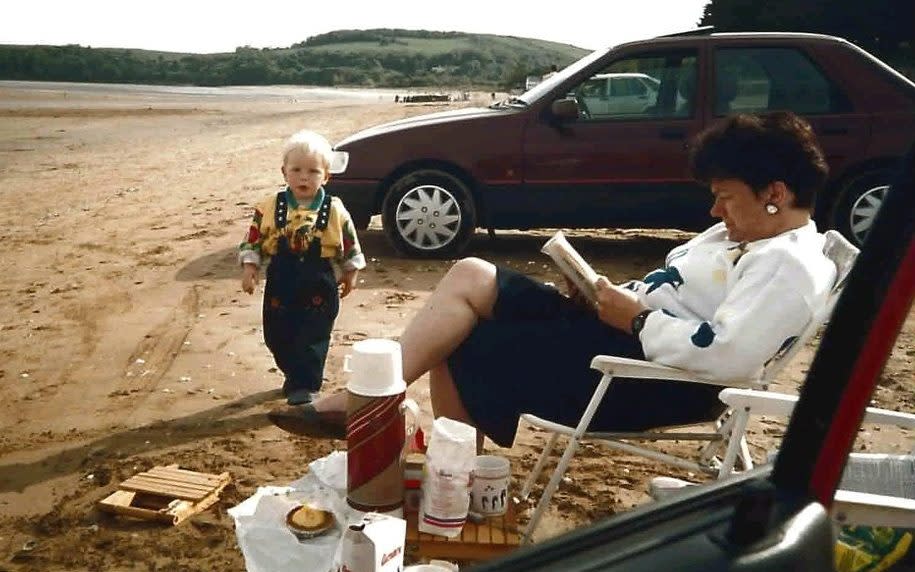‘My life was turned upside down during a routine check-up when I was 31’

I have always been told by people that I’m something of an old soul. I have a distinct memory from my teenage years that I think about quite often. Standing in a guitar shop in my home town of Waterford when I was 17, the guy working there who was helping me said, ‘I can’t tell whether you are 17 or 70, the way you go on!’ I think this is the natural effect of a life growing up with a chronic illness. I was born with a rare congenital heart defect known as transposition of the great arteries.
One in a hundred children are born with a congenital heart defect annually. The seriousness of these ranges from the minor to the life-threatening and even fatal. A tiny fraction of those children are born, like me, with transposition of the great arteries. Thankfully today, most of these defects are easily treated with a combination of early surgical intervention and medicine as well as lifelong follow-up from specialists.
Each year, the number of adults living with a serious congenital heart defect grows globally thanks to advances in our knowledge about these conditions. According to the Somerville Foundation, the only UK-wide charity for adults with congenital heart defects, there are estimated to be 250,000 people in the UK with congenital heart defects who have survived into adulthood. This means there are now more adults living with a condition than children, as survival rates into adulthood reach over 90 per cent.
Growing up 'different' and early bullying
When you are a child, it takes a long time to realise that you are different from other children. For me, the sense of difference took me until I was probably 13 or 14. Up to then, I was able to do most of the things that other children could.
I played out on the street, kicked a football around with friends, hung out. It was only as we approached that age when you begin to test the boundaries of what you can do, that I realised my life was a lot more limited than my peers. When we were little, I was bullied a lot in school.
The reasons any of us end up being bullied can range from the innocuous to the insidious: it can be because of height, hair, skin colour, being smart, being stupid. I was bullied for being clever.

Not being particularly physically intimidating, I learned early on in the playground that having an answer back was often my most effective weapon. Knowing things was a kind of power. I was never bullied because of my heart condition, exactly; I was bullied because of what having a heart condition turned me into: a shy, bookish child, but also a little brazen.
As I got older, with the help of family and friends, I let go of the damage that being bullied did to my self-esteem. I remember being hassled on the street once when I was about 18, waiting around in my home town after the nightclubs closed. Two guys I’d gone to school with stepped in and stuck up for me: whatever had passed between us as children created a strange kind of solidarity. Having stood up to them in school, there was a sort of respect between people that comes from conflict.
Another aspect of having a congenital heart defect, especially one as serious as transposition, is that from a young age you become used to a cycle of attending doctors and hospital appointments that most children your age would find completely alienating.
Since as far back as I can remember, I have gone at least once a year to see a cardiologist to keep an eye on my condition. I take exercise tests on a bike to make sure that my lung function is not being impacted by my heart. Simple procedures that most people would take for granted require lots of preliminary assessment for me, as general anaesthetic can be too powerful for people with my condition.
As a child, I was encouraged to follow interests that didn’t require much physical exertion. I took to reading. I was most interested in history as a teenager. I was fascinated by the Vikings and their role in shaping Ireland’s history. Among my most treasured memories of my childhood is a trip to Dublinia, the Viking experience in Dublin where my mother took me as a treat after one of my annual check-ups at the hospital; or the year I was taken to see the Book of Kells in the Long Room in the library of Trinity College. My memories of those trips are inescapably linked in my mind with the smell of a hospital.
All of these experiences – the tests, the doctor’s visits, the medication – meant that I had insight into the lives of adults long before I was one. I knew something already about the fragility of the body. Though I didn’t realise it at the time, it meant that I was beginning to grapple with ideas of mortality much sooner than my peers. The curious thing about this was that it also meant there were other ways in which I remained quite immature, innocent even, well into my teen years.
The double-bind of being sick since birth
Growing up as the baby in a large Irish family like I did, I was bound to be spoiled. Growing up as the sick baby in a large Irish family, I hardly stood a chance. Despite my knowledge of hospitals and the fragility of the human form, I sometimes had a reckless attitude towards my own safety.
This is the double-bind of being sick since birth. Everyone looks out for you, and tries to keep you safe. But, for those of us who grow up with a chronic illness, we know no different, and thankfully perhaps don’t remember just how sick we were when we were little. Heart defects are serious, but they are also invisible to the naked eye, meaning that you learn to talk about them, to explain them. You spend your life in an ongoing state of risk assessment.

My mother was understandably very anxious about me getting into scrapes as a child. I can remember not being allowed to go on a lot of the rides at Oakwood Theme Park in Wales. The same happened at Disneyland in Paris, to which myself and three of my sisters won a trip through a raffle when I was about eight or nine.
Having been wrapped in cotton wool for years, I had a strong desire to assert my independence in the stupidest of ways. The amusement park at our local beach, Tramore, had the waltzers, which I defiantly went on with predictable results: Fast heart rate. Dizziness. Nausea.
I moved away to go to university when I was 18 and relished the freedom, though I was only two hours from home. Since then, I have moved country twice: first to the Czech Republic, where I met the woman who would become my wife and she convinced me to move to her home country of Norway, where I have lived for the past six years.
Most people with a serious heart defect don’t tend to move abroad, and it was never really my plan. But among the many lessons that a life lived with an unpredictable condition teaches is that you occasionally have to take chances when they come. Plans, as we all learned in the past two years, are contingent at best.
Hospitalised during the pandemic
In early 2020, during a routine check-up with my cardiologist in Oslo, signs were detected of an arrythmia. Concerned about this, the cardiologist scheduled me in for an ablation in March 2020. If that didn’t work, he wanted to install a pacemaker. I was just about to turn 32.
Suddenly, my life got turned upside down. Right before I was to have the ablation, Norway shut down.
A few days later, I got Covid-19 and was quickly hospitalised. My situation deteriorated rapidly. After 11 days intubation in ICU, I was moved to the cardiology ward for a week.
After 18 intense days, I was sent home from hospital to begin regaining my strength – my muscles had atrophied badly after so long in bed. By August, I was well enough to have a pacemaker implanted.
Since then, I have spent a lot of my time reckoning with what it means to live with a serious illness. Part of that process has resulted in my book. I have begun to see the ways in which all those moments when I was given greater slack as a sick child, as well as those moments where I was stopped from doing things I wanted to because of the risks they posed, have shaped me into the person I am now.
Instead of seeking the thrill of a roller coaster or the heady buzz of conquering a mountain peak, I’ve learned to take pleasure in moving through the world, absorbing it.
I spend a lot of time walking but I rarely take on steep climbs, preferring instead to cast my gaze upwards, to approach the landscape in the same way as we might crane our necks up at a skyscraper in awe.
Recently on holiday in Trondheim, my wife and I visited the majestic Nidaros Cathedral, which dates back to the 11th century. We paid extra to go up on to the roof of the cathedral to take in the views of that beautiful city.
The climb to the roof, up a spiral stone staircase, was an incline of 40 metres in just 172 steps. A sign said that those with heart problems should consider whether or not it was safe. I went up anyway.
Pacemaker, by David Toms, is out now (£12.99, Banshee Press)

 money
money 